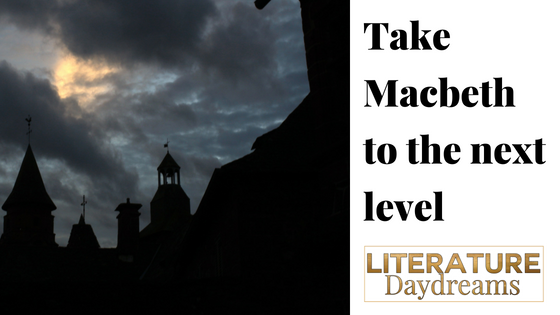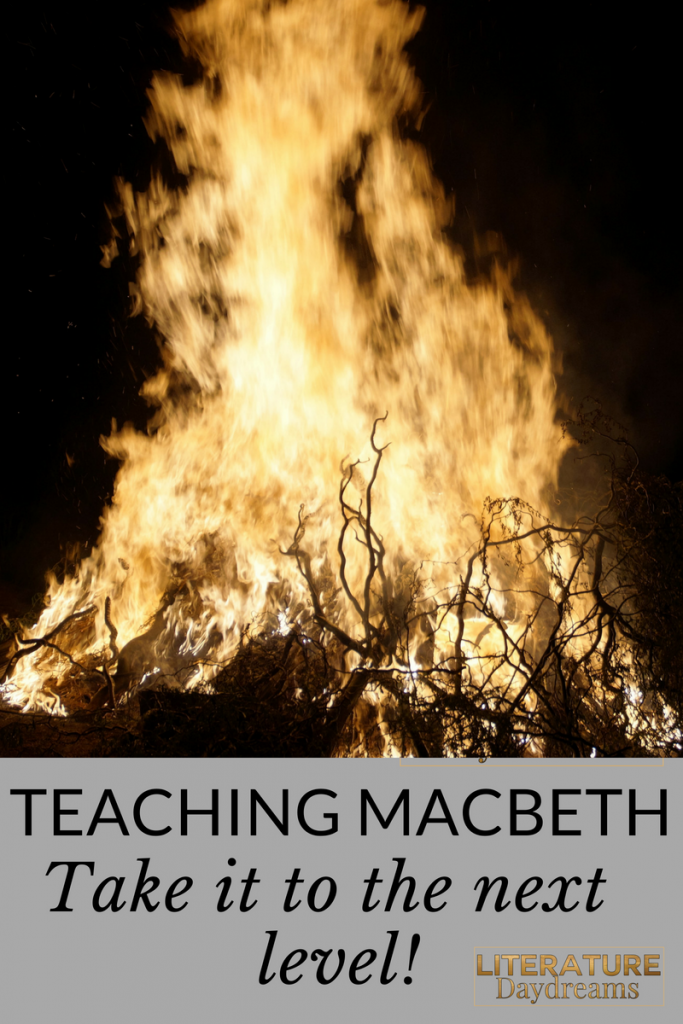Category Archives for "Macbeth"

As we get towards September, I know teaching Macbeth is just around the corner. Again. Please don’t misread me, I LOVE teaching Macbeth. It’s almost my favourite Shakespeare play to teach (see my post on teaching The Tempest).
I teach Macbeth every year and every year I find I l-o-v-e it all over again! In my class, there is no room for a quick trot through the play. My students all sit an examination on the play at the end of their 2 year English Literature qualification. We have to know the play and know it very well. Each year I try to add something new to my Macbeth armoury.
Here are 3 ideas that I used this year to take my teaching of Macbeth to the next level!

Raphael Holinshed was an English chronicler (similar to a historian today) and it is his chronicle of English history that was Shakespeare’s main source for the play Macbeth. Holinshed published two ‘complete histories of England, Scotland, and Ireland’ in the years 1577 and 1587. Each publication holds a large and comprehensive description of the history of these three nations.
Holinshed’s version of the story of Macbeth describes the reign of King Duncan and shows Macbeth to be a bloody dictator. It also included a woodcut illustration of the three witches that presents them more as nymphs or fairies, and less like the dark, genderless creatures in Shakespeare’s play. You can find out more about Holinshed and his chronicles here at the British Library site.
I have included resources for Holinshed’s history in my Macbeth unit on TpT. If you’re curious about what’s included you can find it here!
How do I use Holinshed in the classroom?
It is very simple, we have a short extract that we read directly from Holinshed (like the one below). We read it directly in Early Modern English (Elizabethan English) – you can talk to students, if you feel like it, about this transition moment in the English language. I love that Holinshed, like Shakespeare, shows both the old styles and new styles in his writing.

So somewhere around the end of Act 4 and the beginning of Act 5, we read a page from Holinshed, describing Macbeth’s later reign (remember Macbeth was actually King of Scotland for 17 years). We chuckle at the funny spelling and words.
Then we talk about the differences between Holinshed’s description of Macbeth and Shakespeare’s one. Holinshed generally comes out the winner because his presentation of Macbeth is bloodthirsty to the extreme.
After that, I ask my students to discuss the play by referencing Holinshed’s history. I might use sentence starters like:
The year that Shakespeare wrote Macbeth was a truly spectacular year for English culture and politics. Not only did London see the first performances of King Lear, Macbeth, and Antony & Cleopatra in that one year but England was rocked, almost constantly by political intrigue.
Let’s start with the obvious:
I have a long post already about how I teach Shakespeare meter and rhythm. You can read it here. I use many of the same strategies when I teach Macbeth, but I can never pass up the opportunity to add a little piece to my metrical teaching.
Here are a few ideas that I love in Macbeth:
If you’re curious to learn more about how to teach the meter and sound patterns in Shakespeare then do read my other blog post and download the free resource.
You can also see my complete Macbeth unit by clicking on the picture below:
Finally if you would like to receive free Literature and Writing teaching ideas straight to your inbox, then sign up below!

Sign up below to receive regular emails from me jammed packed with ELA teaching tips, tricks and free resources. Also access my free resource library!
